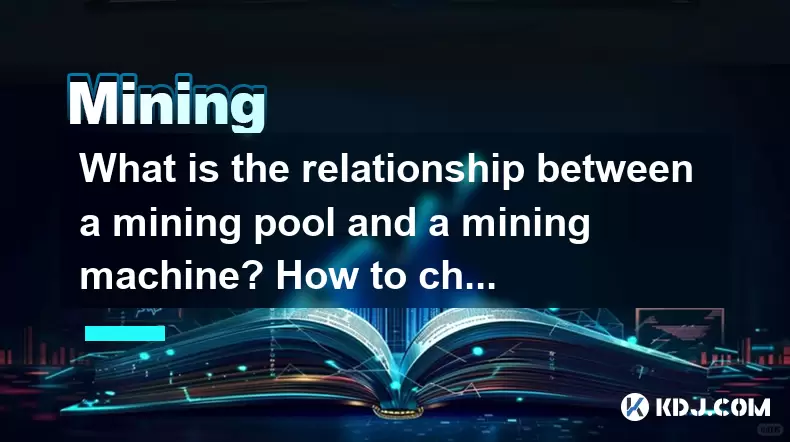-
 Bitcoin
Bitcoin $118600
0.36% -
 Ethereum
Ethereum $3855
1.06% -
 XRP
XRP $3.195
-0.09% -
 Tether USDt
Tether USDt $1.000
-0.04% -
 BNB
BNB $844.5
6.23% -
 Solana
Solana $191.3
2.83% -
 USDC
USDC $0.9997
-0.01% -
 Dogecoin
Dogecoin $0.2376
0.10% -
 TRON
TRON $0.3242
0.83% -
 Cardano
Cardano $0.8222
0.13% -
 Hyperliquid
Hyperliquid $45.26
6.53% -
 Sui
Sui $4.200
-2.56% -
 Stellar
Stellar $0.4336
-1.24% -
 Chainlink
Chainlink $18.86
0.28% -
 Hedera
Hedera $0.2796
-1.75% -
 Bitcoin Cash
Bitcoin Cash $583.3
-1.84% -
 Avalanche
Avalanche $27.06
8.09% -
 Litecoin
Litecoin $112.3
-1.16% -
 Toncoin
Toncoin $3.353
0.58% -
 UNUS SED LEO
UNUS SED LEO $8.968
-0.11% -
 Shiba Inu
Shiba Inu $0.00001395
-0.54% -
 Ethena USDe
Ethena USDe $1.001
-0.03% -
 Uniswap
Uniswap $10.76
0.69% -
 Polkadot
Polkadot $4.175
0.26% -
 Monero
Monero $326.7
1.07% -
 Bitget Token
Bitget Token $4.665
1.61% -
 Dai
Dai $0.9998
-0.02% -
 Pepe
Pepe $0.00001271
0.32% -
 Cronos
Cronos $0.1416
2.01% -
 Aave
Aave $299.3
1.15%
What is the relationship between a mining pool and a mining machine? How to choose a suitable mining pool?
Mining machines provide computational power to pools, which distribute workload and rewards, making mining more efficient and profitable for participants.
May 11, 2025 at 09:57 pm

The relationship between a mining pool and a mining machine is fundamental to the cryptocurrency mining ecosystem. A mining machine, also known as a miner or mining rig, is a specialized computer designed to solve complex mathematical problems to validate transactions and add them to the blockchain. On the other hand, a mining pool is a collective group of miners who combine their computational resources to increase their chances of successfully mining a block and earning the associated rewards. The relationship between the two is symbiotic: mining machines provide the computational power necessary for the mining process, while mining pools distribute the workload and rewards among participants, making the mining process more efficient and potentially more profitable for individual miners.
How Mining Pools and Mining Machines Work Together
When a miner joins a mining pool, they contribute the hashing power of their mining machine to the pool's total computational resources. The pool then distributes the workload among all connected machines, coordinating their efforts to solve the cryptographic puzzles required to mine a block. Once a block is successfully mined, the pool receives the block reward, which is then divided among the participants based on their contributed hashing power. This setup allows miners with less powerful machines to still participate in the mining process and earn rewards, which would be nearly impossible if they were mining solo.
Factors to Consider When Choosing a Mining Pool
Choosing a suitable mining pool is crucial for maximizing your mining efficiency and profitability. Several factors should be considered when making this decision:
Pool Size and Hash Rate: The size of the pool and its total hash rate can significantly impact your potential earnings. Larger pools with higher hash rates tend to mine blocks more frequently, leading to more consistent payouts. However, they also come with higher competition and potentially lower individual rewards.
Pool Fees: Most mining pools charge a fee for their services, which can range from 1% to 3% of the block reward. It's essential to compare these fees across different pools to ensure you're getting the best value for your mining efforts.
Payout Structure: Different pools offer various payout structures, such as Pay Per Share (PPS), Proportional, and Score-based methods. Each has its advantages and disadvantages, so it's important to choose one that aligns with your mining goals and risk tolerance.
Pool Reliability and Uptime: A reliable pool with high uptime is crucial for consistent mining operations. Look for pools with a proven track record of stability and minimal downtime.
Security and Reputation: The security of the pool and its reputation within the cryptocurrency community are vital. Ensure the pool has robust security measures in place to protect your earnings and personal information.
Steps to Join a Mining Pool
Joining a mining pool involves several steps, which can vary slightly depending on the specific pool you choose. Here's a general guide on how to join a mining pool:
Research and Select a Pool: Start by researching different mining pools based on the factors mentioned above. Once you've chosen a pool, visit their website to gather more information and prepare for the registration process.
Register an Account: Most mining pools require you to create an account. This typically involves providing an email address and setting up a password. Some pools may also require additional verification steps.
Configure Your Mining Software: After registering, you'll need to configure your mining software to connect to the pool. This usually involves entering the pool's server address, your username, and any other required settings into your mining software.
Start Mining: Once your mining software is configured, you can start mining. Your mining machine will connect to the pool and begin contributing its hashing power to the collective effort.
Monitor Your Earnings: Keep an eye on your earnings through the pool's dashboard or interface. Most pools provide real-time data on your mining performance and pending rewards.
Evaluating Pool Performance
To ensure you're getting the most out of your mining efforts, it's important to regularly evaluate the performance of your chosen mining pool. Key metrics to monitor include:
Block Finding Frequency: How often the pool successfully mines a block can give you an idea of its efficiency and reliability.
Payout Consistency: Regular and predictable payouts are a sign of a well-managed pool. Inconsistent or delayed payouts could indicate issues with the pool's operations.
Pool Hash Rate: Changes in the pool's total hash rate can affect your potential earnings. A declining hash rate might suggest miners are leaving the pool, while an increasing hash rate could indicate growth and stability.
Pool Fees and Earnings: Keep track of the fees you're paying and the earnings you're receiving. If the fees are too high or the earnings too low, it might be time to consider switching to a different pool.
Switching Between Mining Pools
If you decide to switch to a different mining pool, the process is relatively straightforward but requires careful planning to minimize downtime and potential losses. Here's how to switch pools:
Research and Choose a New Pool: Follow the same steps as before to research and select a new pool that better meets your needs.
Stop Mining on the Current Pool: Before making the switch, stop your mining operations on the current pool to avoid any conflicts or data loss.
Update Your Mining Software: Change the server address and other settings in your mining software to connect to the new pool.
Start Mining on the New Pool: Once your settings are updated, start mining again. Monitor your new pool's performance to ensure a smooth transition.
Withdraw Earnings from the Old Pool: Don't forget to withdraw any pending earnings from your old pool before closing your account.
Frequently Asked Questions
Q: Can I join multiple mining pools at the same time?
A: Yes, it is possible to join multiple mining pools simultaneously, a practice known as "pool hopping." However, this can be complex and may require additional management to ensure you're maximizing your earnings across different pools.
Q: How does the choice of mining pool affect the environmental impact of mining?
A: The choice of mining pool itself does not directly affect the environmental impact of mining. However, pools that prioritize energy-efficient mining practices or use renewable energy sources can contribute to a more sustainable mining ecosystem.
Q: Are there any risks associated with joining a mining pool?
A: Yes, there are risks involved, such as pool security breaches, potential downtime, and changes in pool policies or fees. It's important to choose a reputable and secure pool to minimize these risks.
Q: Can I switch mining pools without losing my mining progress?
A: Switching pools does not directly affect your mining progress, but you may experience a brief period of downtime during the transition. Ensure you withdraw any pending earnings from your old pool before switching to avoid potential losses.
Disclaimer:info@kdj.com
The information provided is not trading advice. kdj.com does not assume any responsibility for any investments made based on the information provided in this article. Cryptocurrencies are highly volatile and it is highly recommended that you invest with caution after thorough research!
If you believe that the content used on this website infringes your copyright, please contact us immediately (info@kdj.com) and we will delete it promptly.
- Avalanche (AVAX) Price Pump Incoming? Analysts Weigh In
- 2025-07-29 06:50:12
- Presales, Investment, July 2025: What's Hot and What's Not
- 2025-07-29 06:30:12
- PayPal, Bitcoin, and Merchants: A New Era of Commerce?
- 2025-07-29 07:10:13
- RUVI Token's Ripple Rally Potential: Audited AI Crypto Heats Up!
- 2025-07-29 04:50:12
- ADA Price, Cardano, SUI & Remittix: Decoding the Latest Crypto Moves
- 2025-07-29 04:50:12
- Solana, ARK Invest, and Staking: A New Era of Institutional Crypto?
- 2025-07-29 05:30:12
Related knowledge

What was the highest APY for IRON mining?
Jul 23,2025 at 05:14am
Understanding IRON Token and Its Mining MechanismThe IRON token is a stablecoin that operates within the Iron Finance ecosystem, primarily on blockcha...

What is impermanent loss in IRON pools?
Jul 23,2025 at 09:00am
Understanding Impermanent Loss in the Context of IRON PoolsImpermanent loss is a phenomenon that affects liquidity providers in decentralized finance ...

How to claim rewards from IRON mining?
Jul 23,2025 at 02:21pm
Understanding IRON Mining and Reward MechanismsIRON Finance operated as a decentralized finance (DeFi) protocol on the Polygon and Binance Smart Chain...

How to claim rewards from IRON mining?
Jul 29,2025 at 05:07am
Understanding IRON Mining and Reward MechanismIRON is a dual-token system designed to stabilize the value of a synthetic asset through a combination o...

IRON mining tutorial for beginners
Jul 27,2025 at 12:01am
What Is IRON and How Does It Work in the Cryptocurrency Ecosystem?IRON is a cryptocurrency token that operates on the Binance Smart Chain (BSC) and is...

How to calculate APY for IRON mining?
Jul 28,2025 at 09:49am
Understanding APY in the Context of IRON Token MiningWhen engaging in IRON token mining within decentralized finance (DeFi) platforms, Annual Percenta...

What was the highest APY for IRON mining?
Jul 23,2025 at 05:14am
Understanding IRON Token and Its Mining MechanismThe IRON token is a stablecoin that operates within the Iron Finance ecosystem, primarily on blockcha...

What is impermanent loss in IRON pools?
Jul 23,2025 at 09:00am
Understanding Impermanent Loss in the Context of IRON PoolsImpermanent loss is a phenomenon that affects liquidity providers in decentralized finance ...

How to claim rewards from IRON mining?
Jul 23,2025 at 02:21pm
Understanding IRON Mining and Reward MechanismsIRON Finance operated as a decentralized finance (DeFi) protocol on the Polygon and Binance Smart Chain...

How to claim rewards from IRON mining?
Jul 29,2025 at 05:07am
Understanding IRON Mining and Reward MechanismIRON is a dual-token system designed to stabilize the value of a synthetic asset through a combination o...

IRON mining tutorial for beginners
Jul 27,2025 at 12:01am
What Is IRON and How Does It Work in the Cryptocurrency Ecosystem?IRON is a cryptocurrency token that operates on the Binance Smart Chain (BSC) and is...

How to calculate APY for IRON mining?
Jul 28,2025 at 09:49am
Understanding APY in the Context of IRON Token MiningWhen engaging in IRON token mining within decentralized finance (DeFi) platforms, Annual Percenta...
See all articles

























































































